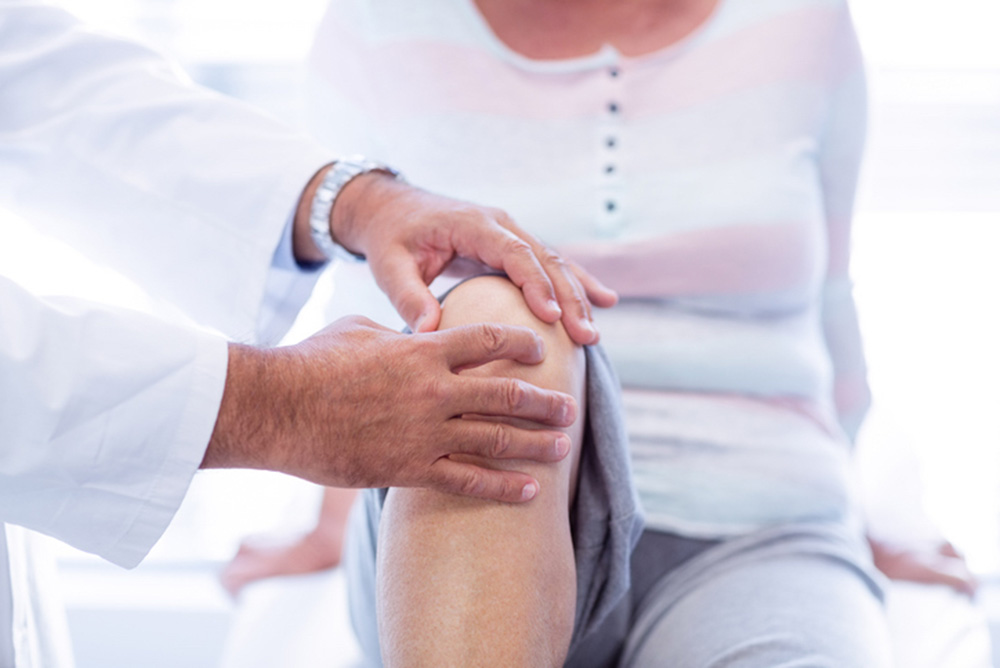
iStock
RE-IMPLANTATION of one’s own stem cells has proliferated over the past two decade. As many as 600 stem cell clinics in the U.S. treat more than 100,000 patients for relief of persistent orthopedic pain, especially for sufferers frustrated by long journeys fraught with unsuccessful treatments. This growth continues despite still-inconclusive data, according to the latest research summary published in December, 2016 and despite lack of reimbursement for stem cell procedures costing from about $4,000 to $12,000 per procedure.
Transplanted stem cells can secrete proteins that improve blood flow, decrease inflammation, help regenerate cartilage and spur recovery; using one’s own cells avoids the risk of an immune system attack on implanted cells. Injected into the bloodstream or into an arthritic joint, these “autologous” transplants are thought to respond to signals from injured and inflamed cells and move through the body in that direction to begin healing the area of pain.
Also published in December, 2016, “the world’s first prospective, blinded and placebo-controlled clinical study” at Florida’s Mayo Clinic examined the benefits of using bone marrow stem cells. When 25 patients, each with two painfully arthritic knees, had one injected with stem cells and the other with a placebo solution, “dramatic improvement” occurred not just in the knee that received stem cells, but also in the other knee.
One conclusion: the re-implanted stem cells “homed” to areas of injury —that is, moved from one knee to the other. Another possibility, that simply injecting anything into knees can provide relief, is unlikely, as orthopedist Shane Shapiro told Mayo Clinic News Network, because “some patients are still doing well years after their study treatment ended.”
Stem cell therapy remains a promising option for treating orthopedic pain because the alternatives are often ineffective. DC lawyer J.F. went down this path for pain—in two small joints at the meeting of the ankle and mid-foot—that made walking very difficult, both for just getting around and as J.F.’s preferred and primary form of exercise.
Of his first treatment, three cortisone injections, the first and third did nothing, and the second helped a little. Afterwards, his orthopedist said: no more shots, “nothing more to do, come back when you’re ready for surgery”—with no time for discussion or questions.
Surgery to fuse J.F.’s foot/ankle joints—where arthritis had destroyed all the cartilage—would involve “six weeks recuperation, off your feet completely,” he was told, followed by weeks or months of rehab. He later learned that it could take more than a year before he walked without pain; even then, permanent loss of some lateral movement could displace everyday stress and shock absorption and cause pain in other joints.
J.F. made the surgery appointment. Then sufficient misgivings drove him on a “campaign to try everything” else. First: acupuncture, which he found calming, but didn’t relieve the pain. Then: a therapy program, Egoscue, which had the wrong focus of improving posture, and also failed to relieve his pain.
The Egoscue therapist, however, told J.F. about StemCell Arts in Fairfax, where pain specialist Mayo Friedlis uses a method called Regenexx to re-implant one’s own stem cells. Over three visits, costing J.F. $7,000, bone marrow was extracted, very uncomfortably, from the hip joint; and stem cells were then isolated and returned to the body —by way of injections into both the joints and other joints as well—along with platelets containing growth factors to augment the effect.
Although the Regenexx procedure allegedly leads to regrowth of cartilage, when J.F. asked if he could look at an x-ray and see more cartilage, Friedlis “did not say yes.”
After the procedure, J.F. stayed off his feet for one day and took it easy for a few more—“nothing” compared to the recovery time required for surgery. Also, he ate a high-protein, low-carb diet, with protein shakes provided by StemArts, to encourage stem cell growth.
At the first follow-up visit at six weeks, he felt “no relief”— and was told only about 50% do better during that period. After 12 weeks, still no results—but one or two weeks later, he started feeling better and walking with less pain.
At that point, however, an alternative emerged that helped J.F. most of all: New York City orthopedist David Weiss, who is “very knowledgeable” about all the alternatives to surgery, according to J.F., because he treats dancers for whom surgery is usually not a good option. Also very important to J.F., Weiss willingly answered questions and talked at length about the options, an experience surprisingly uncommon among orthopedists.
The first treatment Weiss offered was cortisone shots, though not in the painful joints. After the first shot, into the side of his foot: “immediate relief!” said J.F. After the second shot, more “good relief.” Weiss told J.F. he could have these shots every six months as needed —which the D.C. orthopedist had refused because of a slight risk of soft-tissue damage. But Weiss weighed that risk against the long-term effects of inflammation and debilitating chronic pain. Weiss also recommended a DC-based physical therapy group for follow-up treatment that continued to help.
For treating back pain caused by degenerative disc disease, just-in research on stem cell therapy shows “growing evidence of safety and efficacy.” Another analysis of 14 studies involving a total of 533 patients treated with spinal fusion surgery showed that adding stem cell injections led to fewer complications and improved function.
As with many who’ve gone on lengthy quests for relief from orthopedic pain, J.F. doesn’t know for sure what helped when. Maybe the stem cells were starting to work when Weiss added the cortisone shots; maybe both spurred long-term recovery after physical therapy began changing movement patterns; maybe all these treatments bolstered each other; and maybe their ultimate effectiveness was aided by the passage of a frustratingly long period of time.
—Mary Carpenter
Read more of our well-being editor’s posts right here.


MY HIP. Find me an alternative to surgery before September please !!!!!